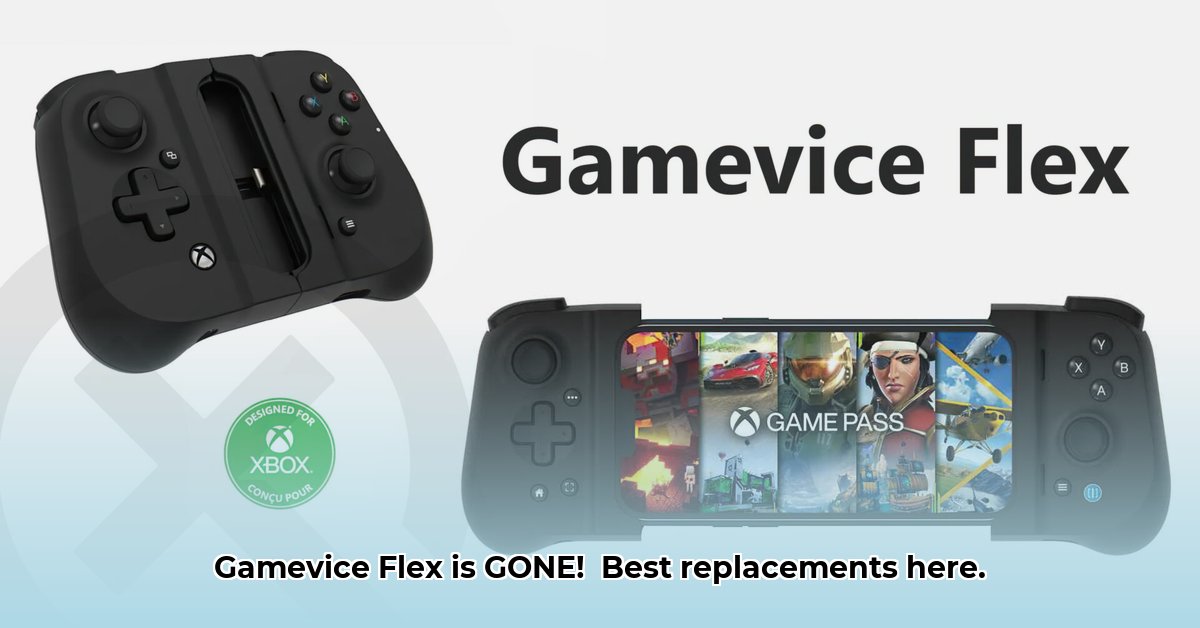
Gamevice Flex Android: The End of an Era
The mobile gaming landscape shifted recently with the unexpected discontinuation of the Gamevice Flex Android controller. This high-end controller, known for its direct USB-C connection and comfortable design, surprised many gamers. This article explores the reasons behind its demise, analyzes its impact on the mobile gaming market, and guides you through choosing the best replacement. We'll also speculate on the future direction of mobile gaming accessories.
Why did Gamevice discontinue the Flex? While the official reasoning remains undisclosed, several contributing factors are likely:
High Production Costs: The Flex's advanced features, including direct USB-C connectivity and compatibility with various phone cases, likely resulted in comparatively high manufacturing costs. This may have made achieving profitability challenging, especially given the competitive pricing in the market. Did Gamevice explore more cost-effective manufacturing options? That remains unknown.
Niche Market Appeal: The Gamevice Flex targeted a specific segment of mobile gamers—those prioritizing high-performance and low-latency gameplay. This niche market may have proved insufficient to sustain production, particularly in the face of competition from more broadly appealing controllers.
Intense Market Competition: The mobile gaming controller market is saturated with numerous brands offering a wide range of options at varying price points. The Gamevice Flex faced stiff competition, leading to potential sales challenges. Was its pricing competitive enough? Possibly not within the broader market ecology.
Your Best Bets After the Gamevice Flex
While the Gamevice Flex is gone, several compelling alternatives remain. The best choice depends on your priorities: performance, portability, budget, or platform integration.
| Controller | Connectivity | Pros | Cons | Ideal For |
|---|---|---|---|---|
| Razer Kishi V2 | USB-C | Exceptional ergonomics, low latency, pass-through charging. | Higher price point. | Gamers prioritizing responsiveness and comfortable gameplay. |
| Backbone One PlayStation Edition | Bluetooth | Official PlayStation integration, comfortable design, robust build quality. | Limited Android game compatibility, no pass-through charging. | PlayStation mobile gamers. |
| 8BitDo Pro 2 | Bluetooth/Wired | Exceptional versatility (Android, PC, Switch), budget-friendly. | May not feel as premium as dedicated mobile controllers. | Budget-conscious gamers and cross-platform players. |
| Gamesir X2 | USB-C | Compact and portable, direct connection, affordable. | Lacks advanced features of higher-end options. | Casual gamers and those seeking value. |
The Future of Mobile Gaming Gear
The discontinuation of the Gamevice Flex highlights the dynamic nature of the mobile gaming accessory market. Success requires a balance of innovative features, competitive pricing, and strong market demand. Will there be a renewed focus on standardized controller interfaces to improve compatibility? This is a possibility. What is certain is the market's responsiveness to evolving gamer needs and preferences. This signifies that consumers will likely make more informed purchasing decisions, focusing on features that directly address their gaming needs.
Key Takeaways:
- The Gamevice Flex's discontinuation signals the competitive pressures within the mobile gaming accessory space.
- Choosing a suitable replacement requires careful consideration of individual gaming preferences and needs, including budget, platform preference, and desired level of performance.
- Many exceptional controllers are available, offering a diverse range of features and price points.
What are your thoughts on the Gamevice Flex's discontinuation? Share your experiences and opinions in the comments below!
⭐⭐⭐⭐☆ (4.8)
Download via Link 1
Download via Link 2
Last updated: Friday, May 30, 2025